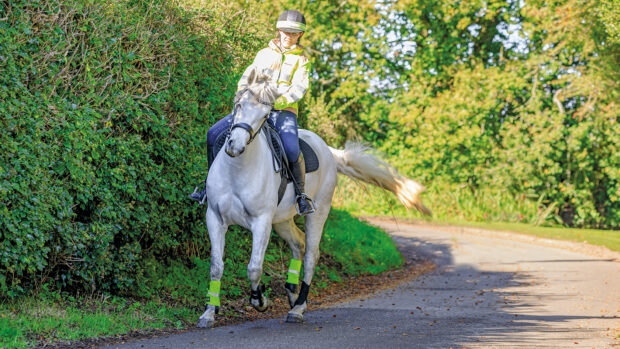The “happiness” of competition horses, particularly within the dressage world, has been put under the microscope since the introduction of the new FEI directive that calls for the dressage horse to be a “happy athlete”. This was recently debated at length at the Global Dressage Forum.
It is also crucial, however, that producers, trainers and riders consider more than just training methods in the production of a happy horse. Feeding is one important area that can have great effect on a horse’s mental wellbeing.
Horses may be very large, but their digestive systems exist in a fine balance, which, if upset, can lead to an unhappy horse. It is not uncommon to hear of colic in high-profile competition horses, while a horse who shows external signs of unhappiness, such as napping, being spooky or simply refusing to listen, may benefit from having it’s diet reassessed.
Competition horses in hard work can be stabled for long periods of time. Three hard feeds and two haynets (a fairly normal daily intake for a competition horse) will occupy a horse for about 15% of the day, less than a quarter of the time that a free-grazing horse would spend eating. This leaves a lot of time when the horse will be standing unoccupied.
Not only is this extra “free time” associated with an increased prevalence of stereotypical behaviours, it also affects the digestive system.
There is the risk of gastric ulcers, thought to form as a result of the imbalance between the stop-start production of saliva (only produced when a horse chews), and the non-stop production of stomach acid. When the horse moves, the acid erodes unprotected stomach and small intestinal linings. The prevalence of ulcers is high in racehorses and competition horses.
Additionally, large high-starch meals, fed to deliver elevation and presence, (usually in combination with limited forage), mean a high chance of starch overflow into the hindgut, with a resulting digestive disturbance and discomfort.
If you want to feed more forage but find that your horse either becomes unrideable or puts on too much weight, then try a low-calorie, short-chop forage replacement, which won’t contribute excess weight or excitability and can be fed safely in large quantities.
|
||
 |
||


 Get up to 19 issues FREE
Get up to 19 issues FREE TO SUBSCRIBE
TO SUBSCRIBE 



